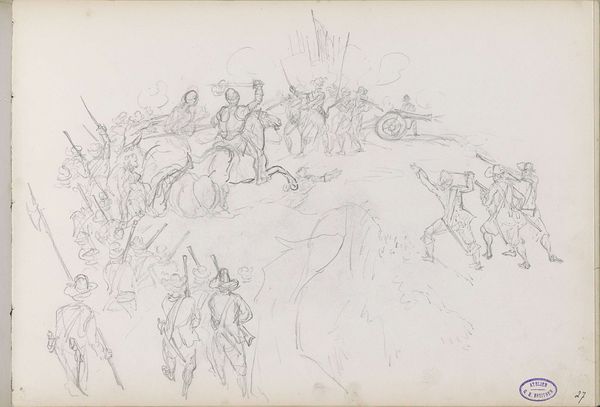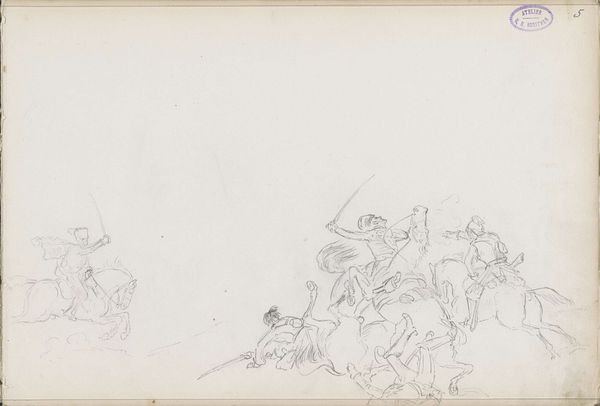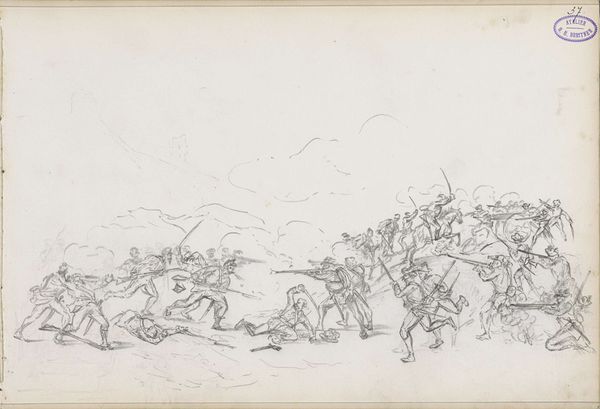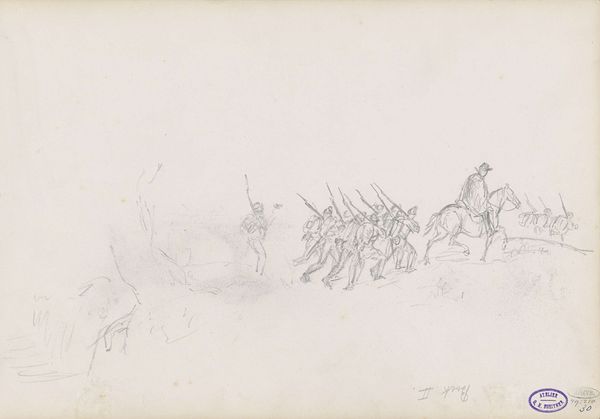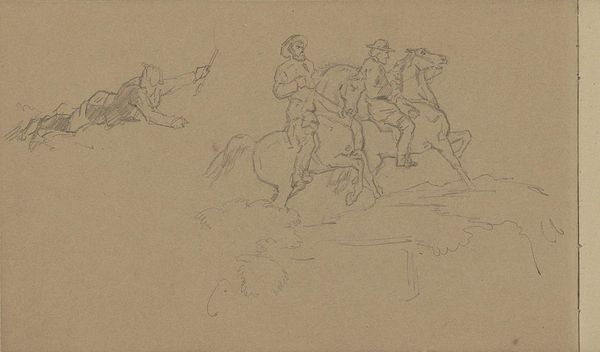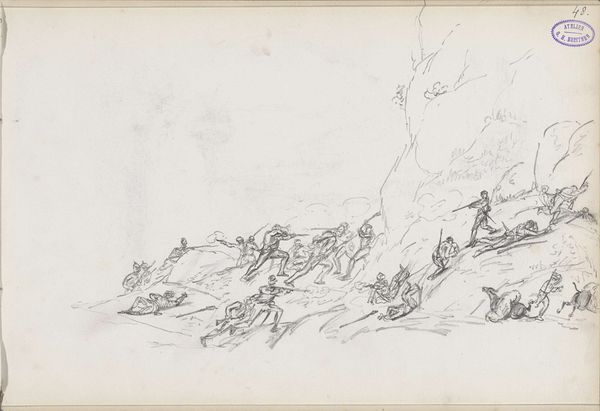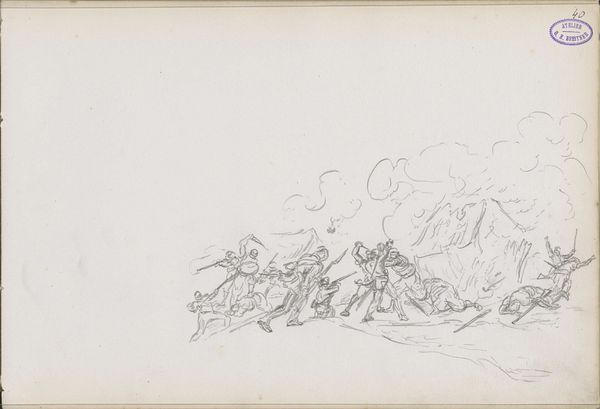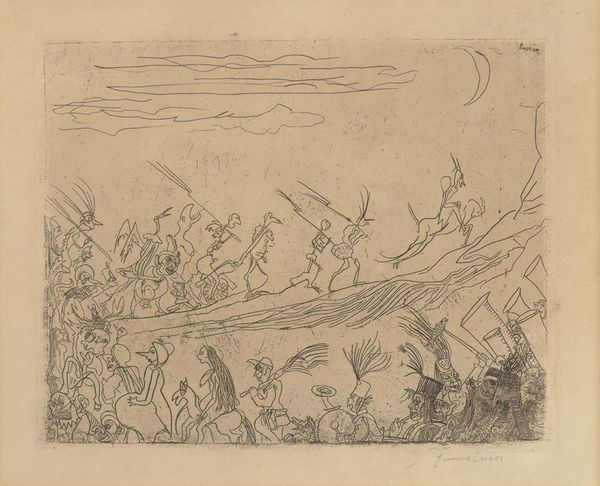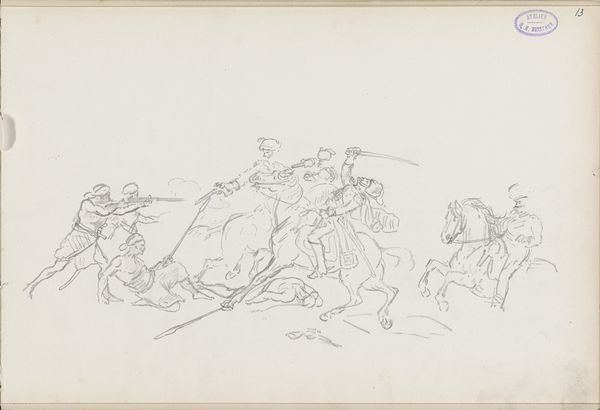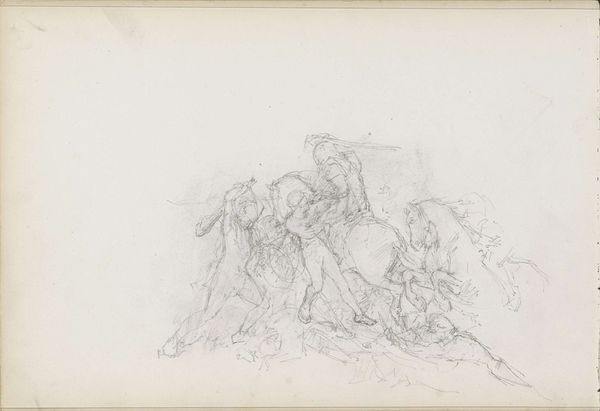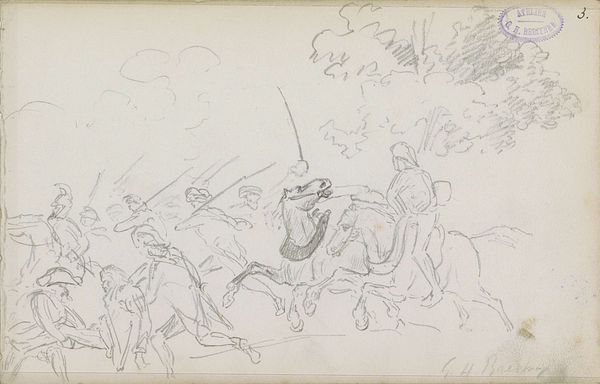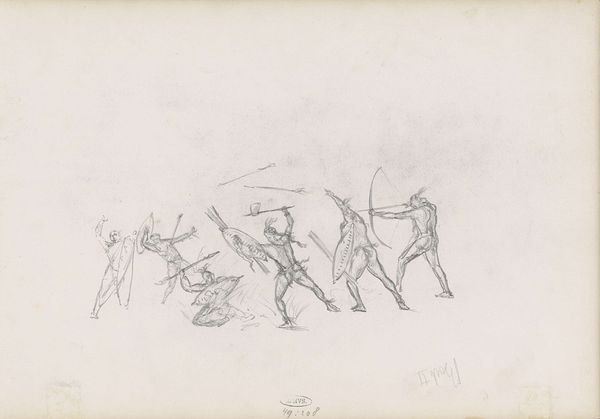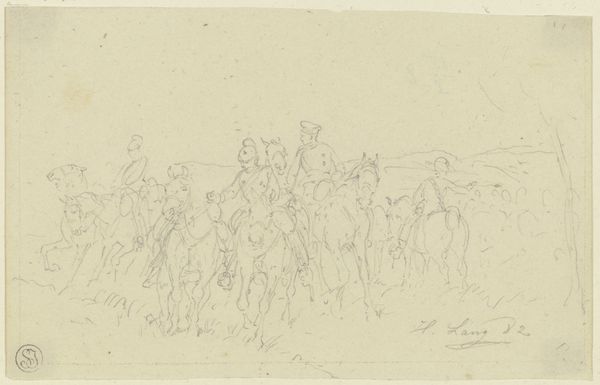
drawing, paper, pencil
#
drawing
#
landscape
#
figuration
#
paper
#
pencil
#
realism
Copyright: Rijks Museum: Open Domain
Editor: Here we have George Hendrik Breitner’s “Fighting Soldiers on Horseback,” a pencil drawing from 1873. There's an energy to it, almost chaotic with all the figures intertwined, like a snapshot of raw conflict. What's your take on this, seeing it as a historian? Curator: This drawing offers insight into the artistic climate of the time, specifically the developing realist movement in the Netherlands and its engagement with themes of conflict. Breitner's sketch aligns with a growing interest in depicting everyday life, but also raises questions about the portrayal of military life and its potential glorification or critique in the aftermath of various European conflicts of the 19th century. What kind of context do you think a title like “Fighting Soldiers on Horseback" creates for the viewer? Editor: I guess it frames the image, maybe priming you to see bravery and heroism when it might just be messy violence. The landscape above the fray almost makes it look… detached? Curator: Precisely. The landscape, almost abstract, could be interpreted as a comment on the remoteness of leadership from the actual violence on the ground, or the indifferent backdrop against which these conflicts unfold. Think about how war imagery functions publicly. Do you see an attempt to celebrate the military, or something else at play? Editor: I see how it hints at something beyond the immediate action, maybe more about the social forces that cause this sort of clash, or the disconnection from the impact of fighting. It also reads as critical because it’s just a pencil drawing and it doesn’t attempt to represent grandeur and finish like an history painting. Curator: Exactly. This study is raw. It begs questions about the artist’s intent. And as you observed it opens up a wider societal view to the subject. What do you think you’ll take away from this encounter? Editor: Definitely a deeper understanding of the power of context and intention in interpreting art – how an image like this can spark conversations about so much more than just what’s on the surface. Thank you!
Comments
No comments
Be the first to comment and join the conversation on the ultimate creative platform.
